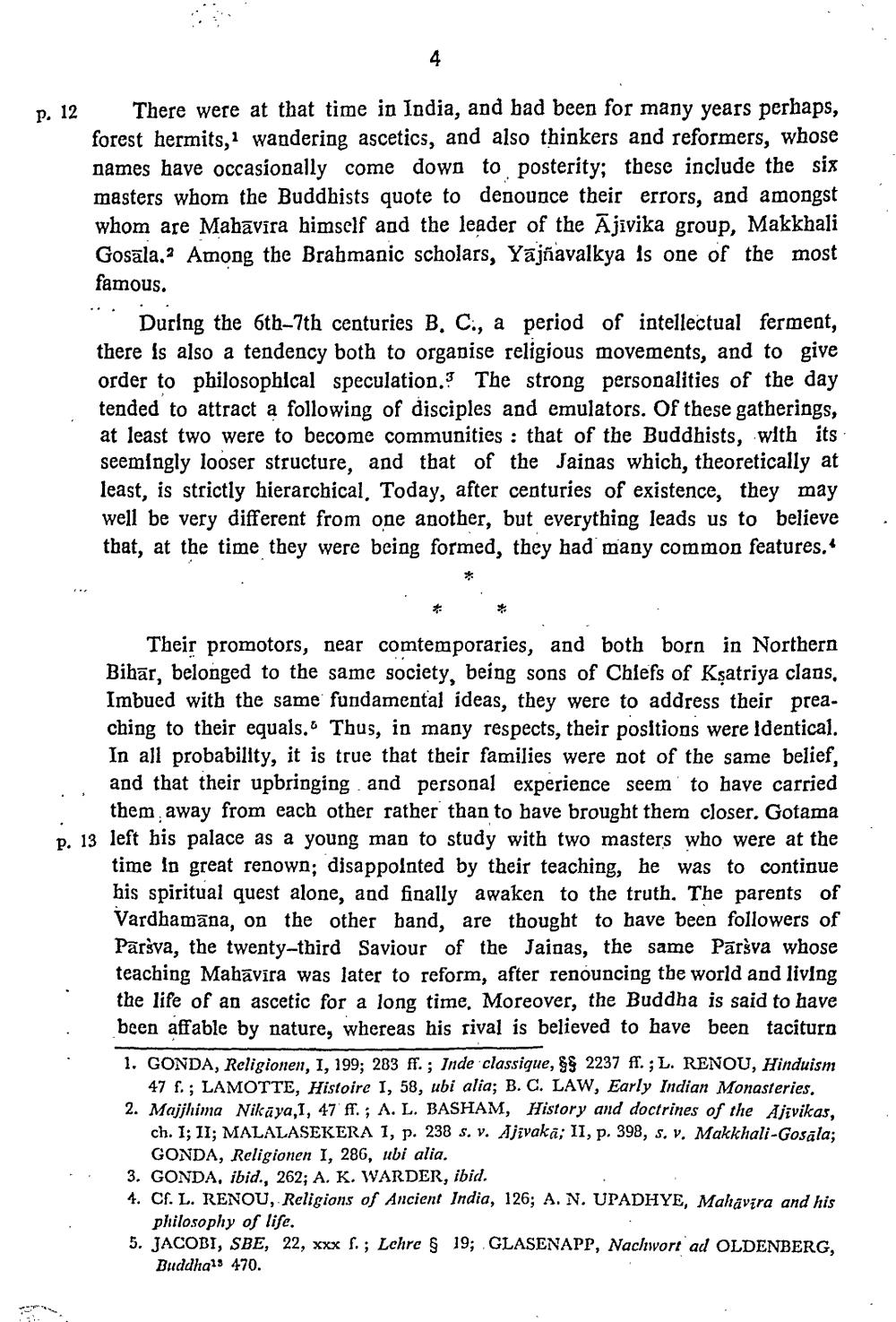________________
p. 12
There were at that time in India, and bad been for many years perhaps, forest hermits, 1 wandering ascetics, and also thinkers and reformers, whose names have occasionally come down to posterity; these include the six masters whom the Buddhists quote to denounce their errors, and amongst whom are Mahavira himself and the leader of the Ājivika group, Makkhali Gosala." Among the Brahmanic scholars, Yajñavalkya is one of the most famous.
During the 6th-7th centuries B. C., a period of intellectual ferment, there is also a tendency both to organise religious movements, and to give order to philosophical speculation. The strong personalities of the day tended to attract a following of disciples and emulators. Of these gatherings, at least two were to become communities : that of the Buddhists, with its seemingly looser structure, and that of the Jainas which, theoretically at least, is strictly hierarchical, Today, after centuries of existence, they may well be very different from one another, but everything leads us to believe that, at the time they were being formed, they had many common features.
Their promotors, near comtemporaries, and both born in Northern Bihar, belonged to the same society, being sons of Chlefs of Kşatriya clans, Imbued with the same fundamental ideas, they were to address their preaching to their equals. Thus, in many respects, their positions were identical. In all probability, it is true that their families were not of the same belief, and that their upbringing and personal experience seem to have carried
them away from each other rather than to have brought them closer. Gotama p. 13 left his palace as a young man to study with two masters who were at the
time in great renown; disappointed by their teaching, he was to continue his spiritual quest alone, and finally awaken to the truth. The parents of Vardhamana, on the other hand, are thought to have been followers of Parsva, the twenty-third Saviour of the Jainas, the same Pārsva whose teaching Mahavira was later to reform, after renouncing the world and living the life of an ascetic for a long time, Moreover, the Buddha is said to have been affable by nature, whereas his rival is believed to have been taciturn 1. GONDA, Religionen, 1, 199; 283 ff. ; Inde classique, &$ 2237 ff.; L. RENOU, Hinduism
47 f. ; LAMOTTE, Histoire 1, 58, ubi alia; B. C. LAW, Early Indian Monasteries, 2. Majjhima Nikaya, 1, 47 ff. ; A. L. BASHAM, History and doctrines of the Ajīvikas,
ch. 1; 11; MALALASEKERA 1, p. 238 s. v. Ajīvaka; 11, p. 398, s. v. Makkhali-Gosāla;
GONDA, Religionen I, 286, ubi alia. 3. GONDA, ibid., 262; A. K. WARDER, ibid. 4. Cf. L. RENOU, Religions of Ancient India, 126; A. N. UPADHYE, Mahavira and his
philosophy of life. 5. JACOBI, SBE, 22, xxx f. ; Lchre § 19; GLASENAPP, Nachwort ad OLDENBERG,
Buddhais 470.




